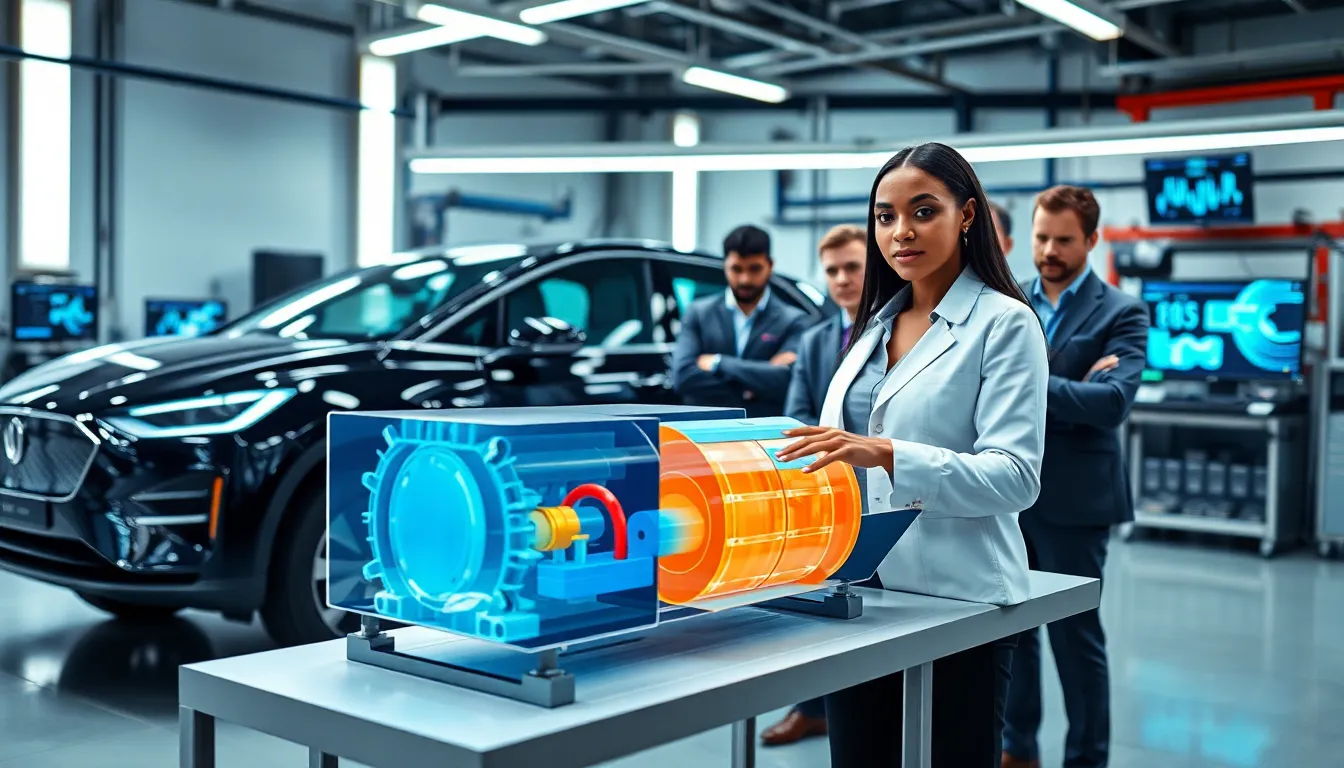Think your car is just a metal box on wheels? Think again. In the world of electric vehicles (EVs), keeping cool is more than just a fashion statement. It’s all about performance, efficiency, and longevity. Imagine cruising along, only to have your battery decide to take a spontaneous vacation due to heat. Yikes. That’s where thermal management systems step in. They regulate temperatures to ensure that every ride is smooth, efficient, and devoid of unexpected surprises. Let’s jump into why these systems are the unsung heroes of electric vehicles.
Table of Contents
ToggleImportance of Thermal Management in Electric Vehicles

When it comes to electric vehicles, thermal management is crucial. It plays a significant role in ensuring that batteries and other components function optimally. Electric vehicle batteries generate heat during charging and discharging. If temperatures rise unchecked, performance dips, leading to reduced efficiency, shorter range, and in severe cases, battery degradation. Proper thermal management not only extends battery life but also increases the overall lifespan of the vehicle.
Also, maintaining optimum temperature enhances safety. Batteries that run too hot can suffer thermal runaway, potentially causing fires. In times of extreme weather, a well-functioning thermal management system ensures that the vehicle operates smoothly, regardless of external conditions. As a result, consumers can enjoy a consistent driving experience without those annoying unexpected alerts about overheating.
Components of Thermal Management Systems
The backbone of any reliable thermal management system includes a blend of several components working in harmony. Key elements include:
- Cooling Systems: This often involves a mix of liquid and air cooling systems to dissipate heat effectively. Liquid cooling is generally more efficient, transporting heat away from sensitive components like batteries and motors.
- Heating Systems: Just as cooling is vital, heating systems ensure that batteries reach their optimal temperature, especially in colder climates. They help in maintaining performance during those frosty mornings.
- Heat Exchangers: These nifty devices allow heat transfer between the battery and coolant, optimizing the overall temperature regulation within the system.
- Thermal Insulation: Insulation materials protect components from external temperature fluctuations, ensuring they operate within their ideal ranges.
Each piece of the puzzle holds importance. The combination of these components makes it possible for electric vehicles to perform effectively under varying conditions.
Types of Thermal Management Solutions
Navigating the realm of thermal management solutions can feel like finding a needle in a haystack. Various methods cater to different vehicle designs and performance requirements:
- Active Systems: These systems use mechanical devices, like pumps and fans, to regulate temperatures actively. They allow for precise control and quick response to temperature changes.
- Passive Systems: Passive solutions rely on thermal conduction and natural convection. While they tend to be simpler and lighter, they may not respond as quickly to extreme temperature variations.
- Phase Change Materials (PCMs): These clever substances absorb and release thermal energy during phase transitions, helping to maintain consistent temperatures.
- Hybrid Systems: Blending active and passive elements, hybrid systems aim to maximize efficiency and reliability, capitalizing on the strengths of both approaches.
Each type of thermal management solution presents unique advantages, likely influenced by design goals and market demands.
Challenges in Thermal Management for Electric Vehicles
While thermal management solutions are impressive, they’re not without challenges. One significant hurdle is the increasing energy density of batteries. As batteries become more powerful, they generate more heat, which can lead to complexities in managing that heat effectively. Besides, the balancing act between weight, space, and efficiency can complicate the design process.
Another issue lies in varying environmental conditions. Electric vehicles need to maintain efficiency across a spectrum of temperatures, from sweltering summers to icy winters. Engineering a system that performs well in all these scenarios is indeed a challenge.
Finally, integrating advanced materials and technologies often comes with higher costs, which can later impact vehicle pricing. The industry is continually evolving, seeking to address these obstacles while meeting consumer demands for performance and affordability.
Future Trends in Thermal Management Technologies
As the electric vehicle market grows, so do innovations in thermal management technologies. Looking forward, here are several trends that could shape the future:
- Smart Thermal Management: Advanced algorithms and artificial intelligence could optimize temperature control in real time, adapting to driving conditions and external environments.
- Improved Materials: The development of lighter and more efficient thermal management materials is on the rise. Innovations in nano-technology might revolutionize heat conduction and insulation.
- Integration with Vehicle Design: Future electric vehicles are likely to integrate thermal management systems more seamlessly into their overall architecture, promoting more compact and efficient solutions.
- Sustainability Focus: As the automotive industry leans into sustainability, future thermal management solutions may use eco-friendly materials and processes, minimizing the carbon footprint even further.
These trends signal an exciting era for electric vehicle thermal management, promising vehicles that not only perform better but also align with broader environmental goals.



